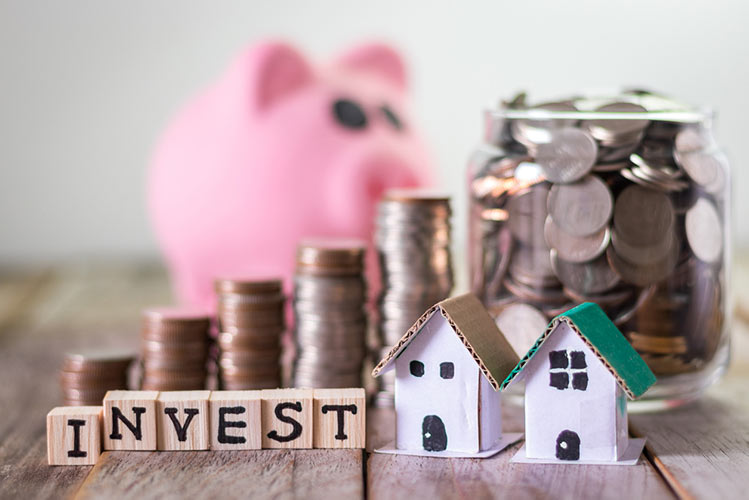
The IRS taxes different types of income at different rates. For example, when it comes to some types of capital gains, they can be taxed at more favorable rates than ordinary income. However, not all capital gains are taxed equally, and rates vary widely.
Not only is it crucial that investors understand capital gains and what they can expect when it's time to file and pay federal income taxes, but policies surrounding capital gains taxation are always subject to alterations.
What Are Capital Gains?
Capital gains are the profit generated from the sale of an asset. Capital gains only apply to assets such as stocks, bonds, jewelry, coin collections, and real estate property. You don't have to pay taxes if you hold onto the capital asset. In fact, even when you die, your heirs don't have to pay.
When the property is sold at a profit, this is known as a realized gain. When it's sold below its adjusted tax basis, it's a realized loss. When there's a loss, the investor isn't required to pay capital gains taxes and can use that loss to offset similar capital gains. If losses outweigh gains for that tax year, this is known as a net capital loss, and investors can declare up to $3,000 on their tax return to offset other types of income. Anything over that amount can be carried over as a loss for the following year.
How Are Capital Gains Taxed?
When you make a profit, Uncle Sam wants his share. Sometimes capital gains are taxed more favorably than other kinds of income, but this isn't always the case. Capital gains tax rates depend on how long you held the asset before its sale and your income bracket.
Short-Term versus Long-Term Capital Gains
Capital gains are either short-term or long-term.
- Short-term investments, which are held for a year or less, are taxed as ordinary income at rates up to 37%, depending on your tax bracket. Individual states also tax short-term investments like the federal government.
- Long-term investments, held for longer than a year before being sold, are treated more favorably. State long-term capital gains tax rates are generally lower than federal rates and are the same as state income tax rates. Federal rates are broken down into three brackets for a 2022 single-filer:
- 0% - Up to $41,675
- 15% - $41,675 to 459,750
- 20% - Over $459,750
These numbers change, and current rates are historically low. Since the capital gains tax was introduced, rates higher than 20% were more commonplace. Even now, there are proposals by the current administration to raise taxes on long-term capital gains for those earning $1 million or more to 39.6%. If you add that to the existing 3.8% net investment income tax on higher-income investors, the federal tax rate could rise to 43.4%.
Special Considerations
There are some rules and exceptions regarding how capital gains are taxed. Here are a few of them:
- If you sell a home that you owned and used as your primary residence for at least two of the last five years, you don't have to pay capital gains taxes on the first $250,000 of gain from the sale. For married couples, that exclusion is $500,000.
- Long-term capital gains on collectibles are taxed at 28%.
- Capital losses from the sale of personal property aren't deductible.
- High-income investors will pay an investment surtax, which is an additional 3.8%, on investment income above a specific threshold.
- If you inherit an asset, the holding period is considered long-term.
Calculating Capital Gains
To calculate capital gains, you'll first need to determine your asset's basis: the price you paid plus taxes and additional funds you reinvested into the asset. Then, you calculate your total gain by subtracting the sales proceeds from the adjusted basis. If the number is positive, that is your gain — however, if the number is negative, you may be able to use that loss to offset any gains.
Here's an example:
Suppose you realized $250,000 from selling real property, but the year before, you lost $75,000 from assets held longer than a year. So your net gain would be $175,000.
These are just general calculations, and it's highly advised that you seek help from a tax professional when calculating your capital gains and what you owe in taxes.
Ways to Offset Capital Gains
Investors use several strategies to offset capital gains. Here are a few ways to potentially ease your tax burden:
Wait longer than a year before you sell. If you wait longer than a year before selling your asset, you might be able to benefit from more favorable tax rates. All it takes is some careful planning.
Tax loss harvesting is selling assets at a loss to offset capital gains tax liability. If losses exceed gains for that year, investors can use up to $3,000 a year to offset ordinary income on income taxes.
Sell when your income is lower. Have you or your spouse recently quit a job? Are you about to retire? Waiting and selling during a year when your income is lower will put you into a lower tax bracket.
Reduce your taxable income. You can minimize your short-term capital gains tax rate by reducing your taxable income if you're selling short-term assets. One way you can accomplish this is by making contributions to a traditional IRA or 401(k) or taking advantage of credits and deductions when filing your tax return, such as investing in municipal bonds. In addition, interest from municipal bonds is exempt from federal and some state income taxes.
Ways To Defer Capital Gains
Some IRS codes allow taxpayers to defer or even eliminate capital gains tax liability. Here are several common capital gains deferment methods often used by real estate investors.
1031 Exchange
Under Section 1031 of the U.S. Internal Revenue Code, taxpayers can defer capital gains on the exchange of certain types of real property. The most significant benefit of the 1031 exchange is the ability to defer your capital gains taxes — indefinitely — so long as you continue to reinvest capital back into real property.
A 1031 exchange is a strategy that allows investors to sell investment or business properties and invest the proceeds into "like-kind" replacement properties. Basically, you can "swap until you drop," and your beneficiaries can receive a one-time step-up in basis that could potentially eliminate the rolled-over tax liabilities.
If you sell an asset purchased through a 1031 exchange without reinvesting those proceeds into a like-kind property, you could receive a massive tax bill from that sale plus any taxes owed through previous 1031 exchanges.
Step-Up in Basis
When a taxpayer leaves an asset to a beneficiary upon death, the tax basis of that beneficiary is "stepped-up" to the asset's fair market value at the time of inheritance. A step-up in basis eliminates the capital gain that occurred between the original purchase price and the beneficiary's acquisition.
For example, let's say you bought a property ten years ago for $150,000, which is worth $300,000 at the time of your death. Your heir receives the property on a "stepped-up" basis at the time of your death, which is $300,000. Thus, the heir does not have any capital gains tax liability.
Consider Opportunity Zones
The 2017 Tax Cuts and Jobs Act offered a new incentive for investors called Qualified Opportunity Zones (QOZs). Through the Qualified Opportunity Zones program, the federal government has designated QOZs, which are economically distressed communities, where new investments may be eligible for preferential tax treatment.
Accredited investors can invest in these communities through a Qualified Opportunity Fund, and the tax benefits depend on how long investors hold onto the QOF investment. Here are the rules and potential benefits:
- Deferral of capital gains taxes: If you invest funds that you obtain as a capital gain into a QOF, you can defer the tax due on those gains until the end of 2026 or when you dispose of the investment, whichever is sooner. Those deferred gains in a QOF (placed there after December 31, 2021) will be subject to capital gains taxes on December 31, 2026.
- Exclusion of taxable income on new gains: Investors pay no capital gains tax on earnings accumulated by their investment in the QOF if they leave it in the fund for at least ten years.
- Step-up in basis: For capital gains placed in a QOF for at least five years, the basis on the original investment increases by 10% and can increase by 15% if it's more than seven years. However, these investments would have to have been made by either the end of 2021 or the end of 2019, respectively, to obtain these benefits. Therefore, this option is no longer available for new investments in QOZ funds.



